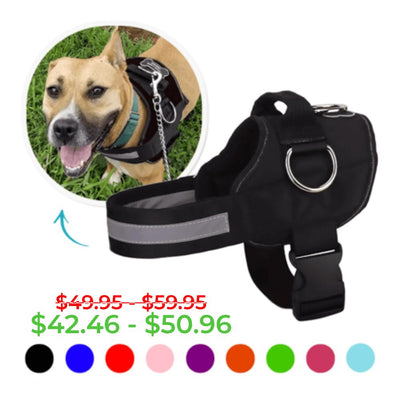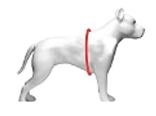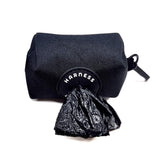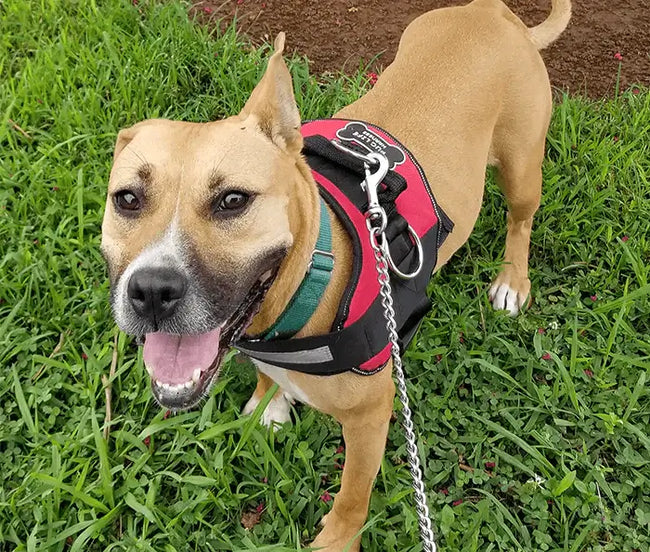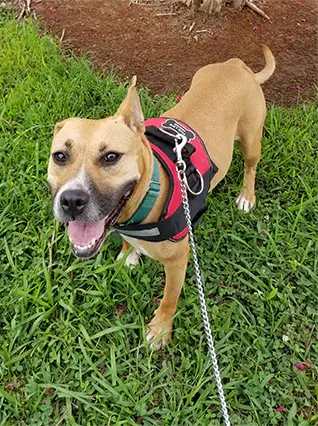Dog Barks & Howls: What Do They Mean?

In a perfect world, we’d understand exactly what our dogs want at all times. We’d love it if our dogs could have a collar like Dug from the movie Up that translates their thoughts into speech. Thankfully, there are key things to listen for that can help us understand our dogs better. The best we can do as pup-parents is to try our best to understand what our dogs' barks mean.
Bark pitch, duration, and frequency are three things to notice when trying to figure out what your dog is feeling. Just like humans use different tones when we are happy or upset, dogs do the same, just with barks!
Bark Pitch
Bark pitches can range from low to high. Lower, deeper pitches can mean aggression and nervousness. Higher, sharper pitches usually mean playfulness and excitement.

Bark Duration
The duration of a bark can show what your dog is feeling. Longer, lower barks can mean the dog feels threatened. Shorter barks could mean the dog is feeling afraid.
Bark Frequency
Bark frequency means that the dog is barking over and over. The barks that repeatedly happen usually mean the dog feels some urgency. Barking once can mean your dog wants something while barking on repeat can mean your dog needs something urgently.
These three types of barking can help figure out whether your dog is feeling playful or feeling concerned. But, each dog may bark differently or have different ways of showing how they feel. For example, some dogs are more vocal than others.
Reasons Why Dogs Bark

There are many things that may trigger your dog to bark. Below are some common reasons why your dog is barking in a certain way and what they might want.
1. Attention Barks
When your dog wants to get your attention, they may bark at you to notice them. Attention barks tend to be a bunch of single barks with pauses between them. You know your dog best, so you will probably know if your dog is asking you for food, to go on a walk, or something else. When dogs are looking for attention, their body language will be relaxed and playful. Common signs of this are a wagging tail and relaxed ears.

2. Fear Barks
Barks linked to feelings of fear will sound very different from playful barks. They will have a lower, deeper pitch and often include growling or howling. These barks will also be more continuous than the short bursts of playful barking.
When your dog is fearful or in defense mode, their barks will show it. You will notice these barks if there is something obvious that your dog is upset about. For example, a stranger in the house may trigger this type of barking or an animal in the yard. Dogs can be very territorial; barking is a good way to recognize what makes your dog afraid.
When your dog is fearful, their body language will reflect it. Their body will be tense no matter what kind of fear they are feeling. Anxious dogs often put their tail between their legs while defensive dogs often point their tail out straight. (Side note, some dog harnesses help your dog feel safer, less fearful.)
3. Pain Barks
Dogs bark when they are in pain. Just like a human would tell you to stop if you are hurting them, a dog's bark will signal the same. A bark that is linked to pain will be very high-pitched and sound alarming. If your dog barks like this when you touch them, this could mean that your dog is injured and needs to see a vet to figure out what is wrong.

4. Howl Barks
There are many reasons why your dog may howl and every dog is different so it’s difficult to pinpoint an exact reason. Your dog may howl to alert you of danger. You can likely determine if this is the case if a stranger in the house triggers your dog's howling. Other reasons your dog may howl are: to communicate with other dogs, if they want something, if they have separation anxiety, or if they are hurt.
Howling in dogs is also triggered by certain sounds. You may have seen videos online of dogs “singing along to music” when in reality, it is just the sounds triggering the instinct to howl. Many high-pitched sounds cause dogs to howl in response. If certain sounds cause your dog to howl, there is likely no reason to be concerned. Your dog should stop howling when the sound stops.
Final Words
You know your dog better than anyone and you’ll become fluent in their doggie language as time goes on. Soon enough, you’ll be confident in understanding what your dog wants or what triggered their barking in the first place.
For more pup pics to make you smile and other furry-friend-fun, follow us on Instagram at @joyrideharness. All of us at Joyride Harness love to share tips and tricks on all things dog care so check out our full blog for tons of additional resources!


